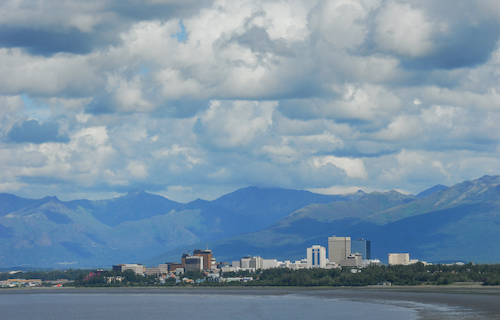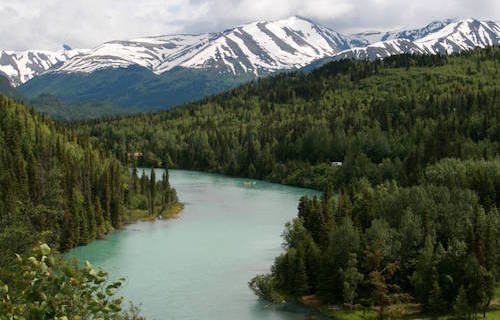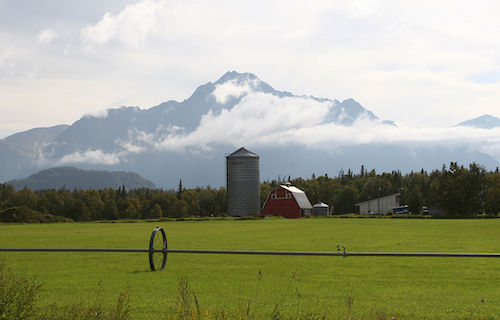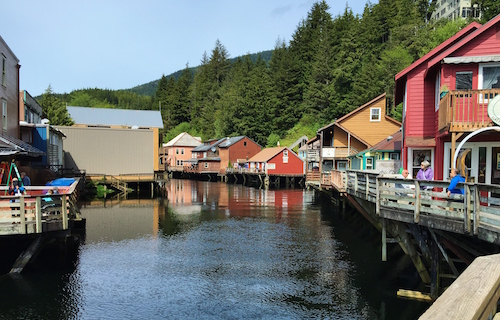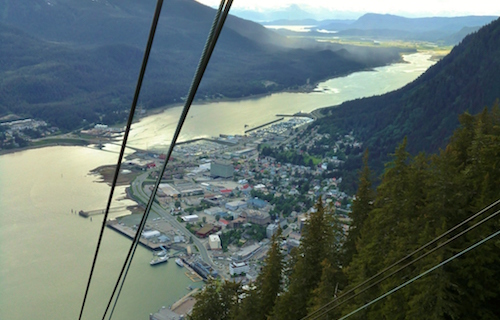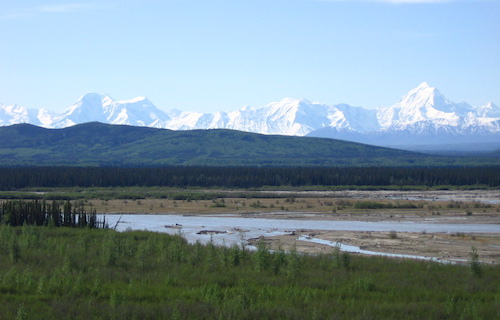Floor Speech: Murkowski Introduces ANWR Directional Drilling Legislation
*** As Prepared for Delivery ***
"Mr. President, I rise today to introduce legislation that I believe represents a true compromise to end a three-decade dispute over oil development in northern Alaska. Today, I am introducing legislation that would permit oil and gas to be siphoned from underneath the Coastal Plain of the Arctic National Wildlife Refuge in northern Alaska but without there being any permanent roads, wells, buildings, pipelines, or structures erected that may interrupt the beauty of the Coastal Plain.
"Today, I am happy to announce that I am being joined by my colleague from Alaska, Senator Begich, in introducing the No Surface Occupancy Western Arctic Coastal Plain Domestic Energy Security Act.
"For 29 years since passage of the Alaska National Interest Lands Conservation Act in 1980, there has been a controversy that has raged over whether oil and natural gas development should occur from within this 1.5 million acres of the Arctic Coastal Plain. This is located right inside the Arctic National Wildlife Refuge in northern Alaska. According to the USGS, the area has a mean chance of containing 10.36 billion barrels of oil and 8.6 trillion cubic feet of natural gas and a high chance of producing 16 billion barrels. This is the largest likely undiscovered onshore conventional oil deposit in North America.
"Over the years, environmentalists have argued that this area cannot be developed without causing disturbance and perhaps environmental damage to the surface of the Coastal Plain which could harm the Arctic porcupine caribou herd that roam in the area and also harm the bird life that utilizes the Refuge during the brief Arctic summer.
"Over the years, this argument and controversy has been fought with near religious intensity. But now what we have is a technology that has been developed that offers a compromise solution that may allow much of the area's energy to be produced without surface damage or disturbance when wildlife is in the area. The solution is to permit oil and gas development to occur without any surface occupancy, meaning without construction of any structures above the ground within the area of the Coastal Plain protected by section 1002 of ANILCA. This is possible since the extended-reach directional drilling technology now permits oil wells to be drilled on the western Alaska State-owned lands, outside of the Refuge's boundary, or from the State waters up to the north, and still be able to tap oil and gas deposits located between 8 to 10 miles inside the Refuge.
"Some have suggested this is incredible. How can you place a well and be able to drill directionally or tap into resources directionally a length of perhaps 8 miles? Proof for this concept comes from British Petroleum's efforts just last season in the 2008 to 2009 drilling season to develop Alaska's North Slope Liberty oilfield. They are using the directional drilling technology that will allow them to tap reserves up to 48,000 feet from the well pad.
"What we are talking about here is placement of a drill and then going directionally out in all areas in a length or a distance of up to 8, possibly 10, miles in all directions. It is like an invisible straw that would essentially be able to siphon the oil from under the Coastal Plain area and provide for the resource we need without surface disruption. According to estimates last year by the U.S. Department of Interior's BLM, up to 1.23 billion barrels of oil and 7 trillion cubic feet of natural gas may be accessible initially using this directional drilling technology.
"This proposal will require that three-dimensional seismic and other tests be conducted within the Coastal Plain to pinpoint exactly where we want to drill for the location of the hydrocarbons. But these can be conducted in the wintertime from ice roads when we do not have any wildlife in the area.
Eventually, more of the oil and gas from the Coastal Plain may be accessible either as the directional drilling technology improves and expands its reach or as other subsurface oil development technology is developed.
"Regardless, if there are no pipelines, if there are no wells, no physical structures that are permitted on the surface of the land, there can be no impact on the wildlife and no degradation to the wilderness characteristics to the Coastal Plain for visitors. Meanwhile, oil to help improve the Nation's supplies and to lower prices can start to be produced quickly since the infrastructure over in Prudhoe Bay already extends to nearly the border of the Refuge.
"Finding more oil in America is vital to prevent oil prices from again spiking as the global economy recovers and energy demand increases. Not one of us can forget the pain of just last summer when world prices of $147 per barrel for crude oil triggered prices of $4 to $5 a gallon at our filling stations. Without more domestic oil being developed, prices can again be expected to skyrocket, especially if OPEC is successful in current efforts to reduce the world's oil supplies.
"There may be some who question whether there is precedent to do something as we are suggesting today. There is clearly precedent. Congress, back in 2007, approved a Wyoming wilderness lands bill. This was the Wyoming Range Legacy Act that permitted subsurface resource extraction provided that no surface occupancy occurs.
"Our legislation would guarantee that royalties from any oil and gas produced would be split equally between the Federal and State treasuries, as is required by current Federal law. It provides for full environmental protections and project labor agreements for any development that results. The bill further proposes that $15 million a year be made available to mitigate any developmental impacts that might result and allocates 50 percent of the Federal share of total revenues to fund renewable energy.
"Senator Stevens, when he was in the Congress last year, and I had introduced legislation to open ANWR. Within that ANWR legislation, it was, again, directing a substantial portion of the revenues to enhance the buildout of our renewable energy. We are proposing that in this legislation as well: 50 percent of the Federal share of the total revenues to fund renewable energy, another 25 percent for fish and wildlife habitat and conservation programs, and then the balance of 25 percent would go to the general Treasury.
"The mitigation aid I just mentioned will guarantee that any Alaskan community impacted by development, especially residents of the North Slope Borough and the village of Kaktovik, will be protected from the indirect impacts of increased development activity.
"What we can anticipate from this is a bill that would funnel tens to perhaps hundreds of billions of dollars toward construction of renewable energy over the life of the prospective oilfields. According to a report by the Congressional Research Service, ANWR's opening could provide the Federal Treasury with $91.7 billion of revenues--and this assumes oil at a price of $60 a barrel--and with $191 billion, assuming oil prices of $125 a barrel.
"This all assumes a mean case estimate that 10.3 billion barrels will ultimately be produced. Obviously, with the legislation we have, the revenues would initially be much less because with the protection for the surface disruption we simply cannot extract as much. But as the technology improves, certainly we could see that amount increase.
"Given that the Obama administration is seeking at least $15 billion a year to fund renewable energy, this measure could go a long way toward meeting the administration's goal to pay for green, renewable energy in the future. It will certainly provide a massive boost to funding for existing fish and game habitat and wildlife conservation programs across the Nation.
"This proposal is a clear benefit for America. We gain the oil and natural gas that is crucial to provide a bridge until a new era of nonfossil fuel, renewable energy can power our lights and move our vehicles. But it also guarantees that none of the Arctic porcupine caribou herd that migrates across the Coastal Plain between June and August will ever see, hear, or feel oil development. The proposal also means that none of the migratory birds that nest on the Coastal Plain will ever be impacted by oil development. And it means that no hiker or wilderness enthusiast who visits the Coastal Plain or floats its river in the brief Arctic summer will ever see, hear, or feel oil and gas development.
"With the proposal and the environmental safeguards this legislation allows the Secretary of the Interior to establish, there is no danger that any of the few species that overwinter on the coastal plain will be impacted by seismic or other activities, and it protects the subsistence resources and activities for Alaskan natives. We clearly have the ability to prevent any impacts to the few polar bears that sometimes den on the coastal plain or the musk oxen that sometimes visit the area in the winter.
"For decades now, Alaskans have been seeking permission to explore and to develop oil in the 1002 area. Given the general estimates the USGS has indicated, we recognize that it offers this country the best chance for a major oil find of any spot onshore in North America, and the technology has advanced so that we now have the possibility of resolving this dispute to the satisfaction of all sides.
"For years, Mr. President, this debate has raged with an intensity that is quite remarkable. I would hope that in this era of change, this bill will change the tone of this debate and permit oil and gas production to go hand in hand with responsible environmental stewardship.
"I thank the Chair for his attention this morning, and I hope that Members of this body who have been engaged in the debate on the potential opening of ANWR for development would look at this proposal with fresh eyes. I hope they will set aside some of the political rhetoric this has generated over the past 25-plus years and look at this as a meaningful way to help enhance our Nation's energy security, while at the same time respecting the land that we have up North.
"I yield the floor."
# # #

